Gennamcb
On this page, you find all documents, package deals, and flashcards offered by seller gennamcb.
- 9
- 0
- 0
Community
- Followers
- Following
9 items
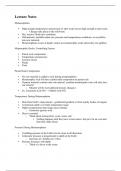
Metamorphism and Metamorphic Rocks
In these notes, you will learn about metamorphism, metamorphic rocks, how temperature, pressure, time, and fluids affect metamorphic rocks, metamorphic rock classification, the development of foliation, foliated metamorphic rocks, non-foliated metamorphic rocks, and metamorphic facies
- Book
- Class notes
- • 4 pages •
In these notes, you will learn about metamorphism, metamorphic rocks, how temperature, pressure, time, and fluids affect metamorphic rocks, metamorphic rock classification, the development of foliation, foliated metamorphic rocks, non-foliated metamorphic rocks, and metamorphic facies
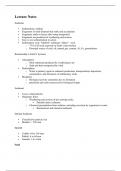
Sediment and Sedimentary Rocks
In these notes, you will learn about sediments and their relationship to the Earth's system, detrital sediment, processes of turning sediment into sedimentary rocks, types of sedimentary rocks -- detrital, chemical, and organic -- and sedimentary structures, like bedding, cross-bedding, ripple marks, graded bedding, mud cracks, fossils, and formations. You will also learn about the interpretation of sedimentary rocks, and sedimentary facies and changes to the sea level
- Book
- Class notes
- • 6 pages •
In these notes, you will learn about sediments and their relationship to the Earth's system, detrital sediment, processes of turning sediment into sedimentary rocks, types of sedimentary rocks -- detrital, chemical, and organic -- and sedimentary structures, like bedding, cross-bedding, ripple marks, graded bedding, mud cracks, fossils, and formations. You will also learn about the interpretation of sedimentary rocks, and sedimentary facies and changes to the sea level

Weathering and Soil
In these notes, you will learn about weathering and soil, erosion, transporation, the different types of weathering, -- mechanical, chemical, and physical -- the products of weathering, soil, soil classification, and what paleosols study
- Book
- Class notes
- • 5 pages •
In these notes, you will learn about weathering and soil, erosion, transporation, the different types of weathering, -- mechanical, chemical, and physical -- the products of weathering, soil, soil classification, and what paleosols study
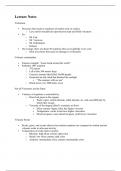
Volcanoes GEOS 1113
In these notes, you will learn about volcanoes, volcanic catastrophes, volcanic landforms like craters and calderas, types of volcanoes, including shield, cinder cones, composite, and domes. You will also learn about basaltic flows, volcanic hazards, including lava flows, sector collapses, ash fall, bombs, lahars, and pyroclastic flows.
- Book
- Class notes
- • 4 pages •
In these notes, you will learn about volcanoes, volcanic catastrophes, volcanic landforms like craters and calderas, types of volcanoes, including shield, cinder cones, composite, and domes. You will also learn about basaltic flows, volcanic hazards, including lava flows, sector collapses, ash fall, bombs, lahars, and pyroclastic flows.
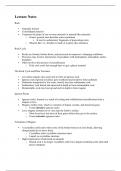
Igneous Rocks and Processes
In these notes, you will learn about the definition of a rock, igneous rocks, magma formations, lava formations, the difference between extrusive and intrusive igneous rocks, melting minerals, and Bowen's reaction series.
- Book
- Class notes
- • 7 pages •
In these notes, you will learn about the definition of a rock, igneous rocks, magma formations, lava formations, the difference between extrusive and intrusive igneous rocks, melting minerals, and Bowen's reaction series.
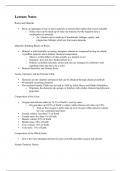
Matter and Minerals
In these notes, you will learn about rocks and minerals, elements, the composition of the crust, atomic particles, isotopes, chemical bonding, metallic bonding, intermolecular bonding, silicate mineral structures, and the physical properties of minerals. The physical properties of minerals include luster, color, streak, hardness (Moh's hardness scale), crystal form/habit, fracture, cleavage, magnetism, chemical reactions, striations, and double refraction
- Book
- Class notes
- • 7 pages •
In these notes, you will learn about rocks and minerals, elements, the composition of the crust, atomic particles, isotopes, chemical bonding, metallic bonding, intermolecular bonding, silicate mineral structures, and the physical properties of minerals. The physical properties of minerals include luster, color, streak, hardness (Moh's hardness scale), crystal form/habit, fracture, cleavage, magnetism, chemical reactions, striations, and double refraction
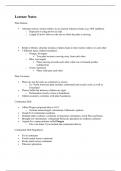
Plate Tectonics and Seafloor Spreading
In these notes, you will learn about plate motion and plate tectonics, continental drift, glaciation, seafloor spreading, passive and active continental margins, paleomagnetism, magnetic polarity, and the different types of convergence.
- Book
- Class notes
- • 9 pages •
In these notes, you will learn about plate motion and plate tectonics, continental drift, glaciation, seafloor spreading, passive and active continental margins, paleomagnetism, magnetic polarity, and the different types of convergence.
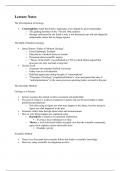
Introduction to Geology
In these notes, you will learn the development and history of geology, the scientific method, seafloor spreading, the nebular theory, geologic time, Earth's systems, Earth's interior, rocks and the rock cycle, the water cycle, and heat engines.
- Book
- Class notes
- • 7 pages •
In these notes, you will learn the development and history of geology, the scientific method, seafloor spreading, the nebular theory, geologic time, Earth's systems, Earth's interior, rocks and the rock cycle, the water cycle, and heat engines.

What is Geology
In these notes, you will learn the definition of geology, what geology is used for, types of geologists, and more. There are also brief discussions about volcanoes, earthquakes, and petroleum
- Class notes
- • 3 pages •
In these notes, you will learn the definition of geology, what geology is used for, types of geologists, and more. There are also brief discussions about volcanoes, earthquakes, and petroleum
